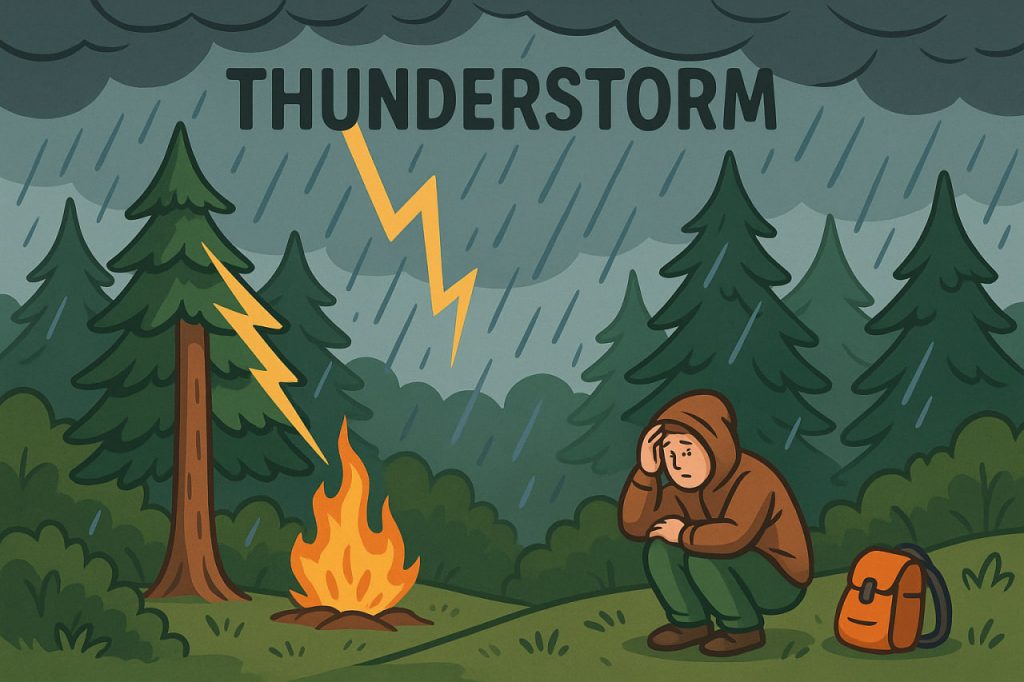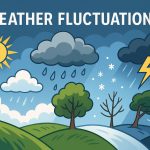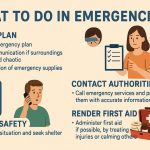Being caught in a thunderstorm in the forest can be frightening, but knowing what to do can save your life. Thunderstorms are dangerous because of lightning, strong winds, and falling branches. While trees offer shelter from rain, they also attract lightning strikes, so your actions during those moments must be deliberate and cautious.
Assess the Situation
The moment you hear thunder or see lightning, it means the storm is already close — lightning can strike several kilometers from the storm center. Stop moving toward open areas or hilltops immediately. Avoid panic, because fear can lead to poor decisions. Try to estimate how close the lightning is by counting seconds between the flash and the thunder sound (every three seconds equal roughly one kilometer of distance).
Find the Safest Place
Never stand under tall, isolated trees or near metal structures like fences, watchtowers, or power lines. Instead, look for a low area such as a small valley or clearing surrounded by uniform trees. If there’s no safe shelter, crouch down on your toes with your feet together, covering your ears with your hands. This position minimizes your contact with the ground, reducing the risk of electric current passing through your body.
What to Avoid
Avoid touching or sitting on wet ground, rocks, or tree roots, as moisture and organic material can conduct electricity. Do not hide inside tents with metal poles or under cliff overhangs where current can travel. If you are in a group, spread out by at least 10–15 meters to reduce the chance of multiple injuries from a single strike.
Using Natural Shelter
If you must use forest cover, find a dense stand of low trees instead of tall solitary ones. Stay away from streams, puddles, or swampy areas — lightning often follows paths of least resistance, including water. If you have a backpack with metal parts, place it at least several meters away from you while waiting for the storm to pass.
After the Storm
Wait at least 30 minutes after the last thunder before leaving your shelter — storms can have secondary waves of activity. Check for injuries or signs of fire caused by lightning in your surroundings. Stay alert for falling branches or weakened trees, which can collapse even after the storm ends.
Interesting Facts
- Lightning can heat the air around it to more than 30,000°C (54,000°F) — hotter than the surface of the Sun.
- Around 10% of lightning strikes happen even when the storm seems to be moving away.
- Forest animals often sense electrical changes in the air and seek low, covered areas before humans even notice thunder.
Glossary
- Lightning — a sudden discharge of electricity during a storm, visible as a flash of light.
- Conductivity — the ability of a material (like water or metal) to allow electric current to pass through.
- Ground current — the flow of electricity through the ground after a lightning strike.
- Shelter zone — a relatively safe area providing some protection during extreme weather.
- Crouch position — a safety posture with feet close together and body low to the ground to minimize contact with the earth.


